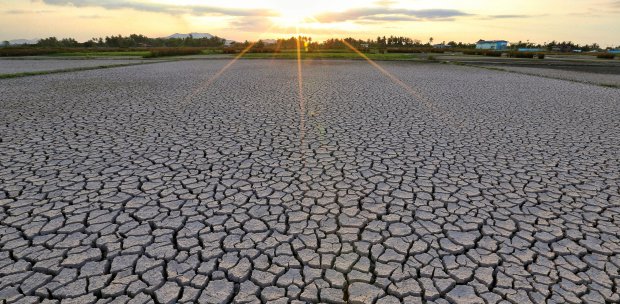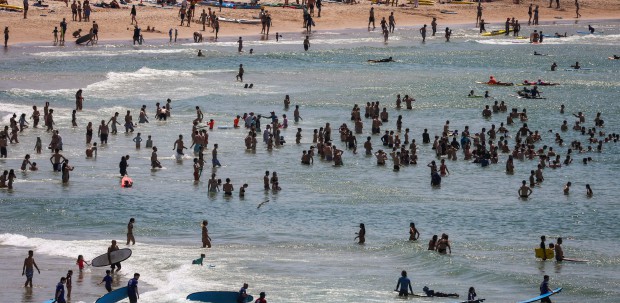Turn on the news during scorching summer heatwaves and wildfires and you'll likely hear warnings that average global temperatures are rising towards a key limit of 1.5ºC above pre-industrial times, intended to avoid the worst of climate change.
What you probably won't hear is that billions of people worldwide are already experiencing local warming of higher than 1.5ºC, the most ambitious global goal set in the 2015 Paris climate agreement.
Several scientists told the Thomson Reuters Foundation that people in Europe, the Arctic, much of Africa, North America, the Middle East, Asia and parts of South America have in recent years been exposed to regional temperatures that breached the 1.5ºC ceiling.
They are being hit hard by the ever-more damaging heatwaves, droughts, floods, storms and wildfires fuelled by temperatures above the 1.5ºC Paris Agreement threshold, the scientists said.
"Many people are living in areas that have already warmed more than 1.5ºC, and ... the main reason for this is that the land warms faster than the oceans," said Robert Rohde, chief scientist at Berkeley Earth, a United States non-profit research group.
With temperatures varying naturally from day to day, it is hard for anyone to notice a long-term local change of 1.5ºC.
But, the creeping rise in regional temperatures on land — which accounts for only 30 per cent of the planet's surface — is super-charging increasingly extreme weather for its 8 billion people.
Worldwide, July was the hottest month on record at exactly the Paris limit of 1.5ºC. United Nations secretary-general António Guterres said this heralded a new era of "global boiling".
And, ever more people are facing global warming of 1.5ºC or above year-round.
Francesco Tubiello, a senior statistician at the UN's Food and Agriculture Organisation (FAO), said nations with a combined population of almost 3 billion people were exposed to more than 1.5ºC of warming in 2022, based on his personal calculations.
"This is a conservative figure," Tubiello added. He compared 2022 with cooler temperatures from 1951-80, the baseline in an FAO and Nasa database, when global warming had already added about 0.3ºC since pre-industrial times.
In a 2018 report, the Intergovernmental Panel on Climate Change (IPCC) estimated that 20-40 per cent of the world's population had experienced more than 1.5ºC of warming "in at least one season".
The quirk of slower ocean warming is often ignored. UN reports, for instance, tend to refer to continents such as Europe and Africa "warming faster than the global average" without mentioning that almost all land is warming quicker than the worldwide average, including seas.
Overall, the IPCC estimates that global average surface temperatures were 1.15ºC warmer in 2013-22 than a pre-industrial baseline of 1850-1900, with land 1.65ºC hotter and the ocean 0.93ºC warmer.
But, there are big differences even on land. Countries such as India — the world's most populous — and much of the southern hemisphere are warming less quickly than the land average.
Zeke Hausfather, a climate scientist at the Breakthrough Institute, a global research group, said cool sea breezes may help offset the pace of warming near coasts.
"People tend to disproportionately live near coastal areas, which tend to have lower rates of warming due to their proximity to oceans," he said, evening out the average person's long-term experience of warming.
The IPCC estimates that 900 million people live in low-lying coastal zones, including in cities such as Tokyo, Mumbai, New York, Shanghai, Lagos and Buenos Aires.
No one knew at the time, but as world leaders celebrated the Paris Agreement in December 2015, global average surface temperatures rose briefly above the 1.5ºC warming goal they had just set, according to the Copernicus Climate Change Service.
Since that first blip above 1.5ºC for a few days, breaches have become frequent and longer, it has found.
Under the agreement, almost 200 nations set the target to limit global warming to "well below" 2ºC above pre-industrial times while "pursuing efforts" to keep it below 1.5ºC.
The UN's World Meteorological Organisation says, there is a 66 per cent probability that global average temperatures will be more than 1.5ºC above pre-industrial times in at least one full year between 2023 and 2027.
The writer is from the Reuters news agency
The views expressed in this article are the author's own and do not necessarily reflect those of the New Straits Times





